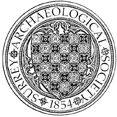Watching brief by P Jones and J Robertson of SCAU, for Wizard Inns, during work on an extension and improvements to the Blue Anchor. The nature of the foundation trenches, 3m deep and 0.85m wide, meant that they were unsuitable for proper archaeological recording to take place. Pottery of Roman (late 1st - 2nd century) date and a small, possibly, Roman coin, as well as late medieval (15th century) pottery, animal bone and tile, were recovered from the spoil heap.
